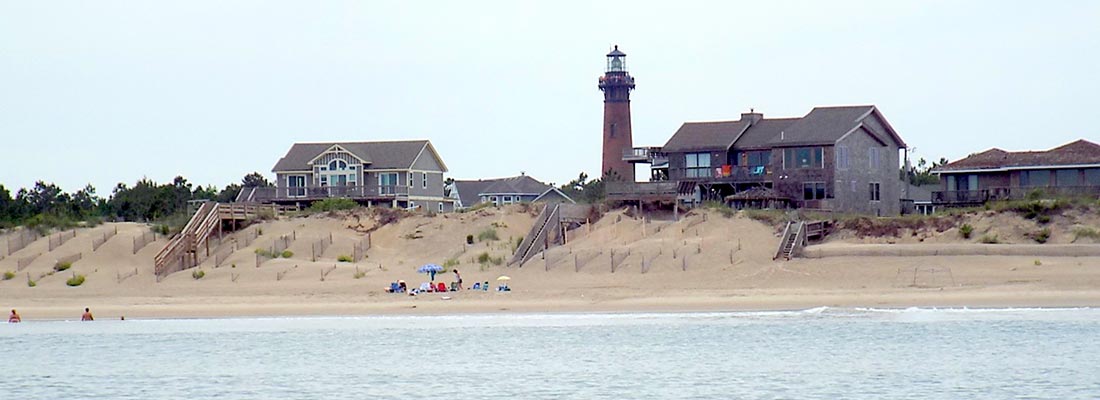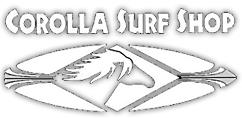Corolla Info

Corolla is part of the northern Outer Banks of North Carolina.
All of our breaks are sand bar breaks. Corolla is a part of a long barrier island with the Atlantic on the east side and the Currituck Sound on the West side. The thinnest part of Corolla is at the Dare/Currituck County line just north of the Sanderling Hotel. The distance between the sound and the ocean is only about 300 yards. The variance in water temps between the ocean and the sound can create unpredictable weather changes, especially in wind speed and direction. Corolla’s coast line is 13 miles long, starting at the Dare/Currituck County line and ending at the 4x4 beach ramp. Corolla’s location on the Outer Banks allows the area to receive swell from both the north and the south. Storms southeast of Corolla send swell that wraps up the outer banks and creates well-shaped rights. Storms to the northeast send swell directly towards Corolla. The sandbars in corolla tend to be further off the beach relative to sandbars in towns south of Corolla on the Outer Banks. This setup consistently creates a friendly wave that is great for learning how to surf.
“When is the best time to go surfing ?”
The components for good surf are swell, a sandbar, wind, and tide. The first element of the equation is “swell”. Swell is the energy force that travels through the water. A great analogy is electricity. Electricity travels through a wire. The wire doesn’t move but the electrical current does move through the wire. The electrical energy is released once it reaches a filament (as in a light bulb). Swell doesn’t become a wave until it reaches a sandbar (or coral reef, rock, etc). Once a swell coming from deep water reaches a shallower area the energy is released in the form of a wave.
The best scenario is a light off-shore wind (out of the West). An off-shore wind will hold the face (or sections) of the wave open, which gives the surfer the ability to travel further down the line of the wave. Too much wind out of the north, east, and south will cause rough ocean surfaces know as chop. Too strong of an off-shore wind will knock the top of the wave off, keeping the wave from breaking.
There are two low tides and two high tides within a 24 hour period. High tide creates deeper water which can prevent the swell from breaking, and low tide does the complete opposite. Of course the moon determines how far the low tide will go out and the reverse for high tide. If surf conditions are decent but the swell needs a little extra push from mother nature, then an incoming tide (from low to high) will help increase the size. (there are exceptions to tides rules, but I’m sticking to the basics.)
So the best time to go surfing in Corolla:
swell ( about 3’) + wind ( off-shore blowing 0-10 mph )+ tides (incoming tide) + break ( about 3’ deep) = waves.
